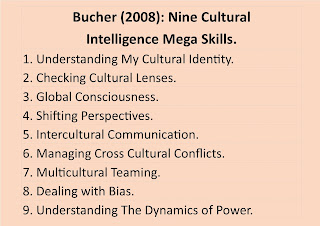PROFESSIONAL CONTEXT - CROSSING BOUNDARIES
Andrews (1990) defines
interdisciplinary collaboration as occurring "when different
professionals, possessing unique knowledge, skills, organizational
perspectives, and personal attributes, engage in coordinated problem solving
for a common purpose" (cited in Berg-Weger &. Schneider, 1998).
 |
| My Interdisciplinary Connections Padlet. For a better view follow this link: |
Interestingly, as I consider all my current interdisciplinary connections, my Padlet became quite a large arrangement. I also noticed that it is impossible to act as an independent. My current interdisciplinary connections and the CoPs I identify with, are interwoven. There are so many connections that we create to enable us to do our job properly that I have unconsciously adopted an interdisciplinary approach.
Benefits and challenges of interdisciplinary
practice in relation to my identified connections:
The key benefit is that of mutual respect
whist giving our learners the 21st Century learning values that are the common
goals of all educators. Those identified in my connections mostly collaborate, communicate,
share resources, develop new skills, show enthusiasm, work on a trust model and
have a shared vision. All of these attributes contribute towards our common
goal of helping my learners to succeed. A challenge might be the possibility of
compromised relationships. As with children working on a common inquiry
project, if the relationships are broken, the outcomes will be lessened.
Benefits and challenges of interdisciplinary
practice in relation to my near future goal:
My near future goal is: the 'shift' to
successful interdisciplinary collaboration in an ILE in 2018, through
implementing STEAM.
Schroeder,
Scott, Tolson, Huang, & Lee (2007), state that “A broad examination of
trends in mathematics and science education reveals numerous calls for
interdisciplinary mathematics and science in classrooms as a potential means to
increase engagement.” I know
from my own experiences implementing; SOLO,
Blooms Taxonomy, collaborative units of work, Six Thinking Hats, Thinkers Keys,
Inquiry learning and completing Infinity Maps, that my pupil’s level of engagement
is far greater than learning about a specific topic and then memorising the
information relating to it. The Ross Curriculum, gives a perfect example of the
interconnections of interdisciplinary learning (Figure 1). The positives
include; creativity, positivity, enthusiasm, relevance, higher levels of
interest, critical thinking, problem solving and generally deeper understandings.
There are also many other bodies of research that confirm
that interdisciplinary collaboration will give our students the skills they
need to find employment in a world with
a greater population, global interconnections, technological advancements and more
problems than ever before.
 |
| Figure 1. The Ross Curriculum Spiral. |
When watching the video: An
Interdisciplinary Approach to Science (2015, July 5), I noticed the thoughtful comments
made by the learners at The Ross Institute cemented the whole concept of
interdisciplinary practice.
 |
| Comments from the pupils at the Ross Institute. |
STEAM education links with
interdisciplinary collaboration as it promotes the teaching of how all things relate
to each other. As teachers, we need to collaborate to make decisions on what
this learning journey will ‘look like’ for our students. For it to be
successful, we will require some PD to ‘unwrap’ the pedagogy of both STEAM and
ILE teaching. Our learning needs to be evidence and research based. We will
also need time to plan together and set goals. Mulligan, L. M., & Kuban, A.
J. (2015) have developed a conceptual model for interdisciplinary collaboration
(Figure 2) which shows that if the three elements come together, then
successful collaboration can occur. I feel confident that the teachers selected
to work together have the interpersonal skills, intrapersonal skills, shared language, mind-set and
range of abilities to create a new CoP, to independently meet and discuss the
learning and teaching opportunities ahead to successfully pursue this journey,
creating positive interdisciplinary learning experiences for our students. Conversely,
if we don’t have the interdisciplinary
mind-sets to collaborate, and some or all of elements in the conceptual model
for interdisciplinary collaboration (Mulligan, L. M., & Kuban, A. J., 2015)
have become compromised, then the potential of this exciting new learning
journey might not be as effective.
ITL Research. (2012). 21CLD Learning Activity Rubrics. Retrieved from: https://education.microsoft.com/GetTrained/ITL-Research
Mulligan,
L. M., & Kuban, A. J. . (2015). A Conceptual Model for Interdisciplinary
Collaboration. Retrieved from: http://acrlog.org/2015/05/14/a-conceptual-model-for-interdisciplinary-collaboration/
Padlet.
Retrieved from: https://padlet.com
Ross Institute. (2015, July 5). Ross Spiral Curriculum: An
Interdisciplinary Approach to Science. [video file]. Retrieved from: https://www.youtube.com/watch?v=hHZhkB0FJik
Schroeder, C. M.,
Scott, T. P., Tolson, H., Huang, T.-Y. and Lee, Y.-H. (2007), A meta-analysis
of national research: Effects of teaching strategies on student achievement in
science in the United States. Retrieved from: http://onlinelibrary.wiley.com/doi/10.1002/tea.20212/full
The Ross Spiral Curriculum. Retrieved from: http://www.rosslearningsystem.org/curriculum/




I think there are many factors that could affect the 'compromises' you talk about... as theories are exactly that (and ideal in what they aim to achieve), the real test is when the rubber meets the road, and concerns the integrity of the individuals who make up the collaboration. Certainly the 3 faceted conceptual model (Mulligan & Kuban, 2015) outlines many aspects to this strong interdisciplinary model. In other ways, if you took away the academic articles, I would argue that this is clearly not a new concept, and we could consider that this approach is the direction we would be heading in anyway, through learning by experience.
ReplyDeleteThanks Sarah. I agree with you in that interdisciplinary collaboration is not new. On reflection though, it is a model that I think will have the most benefits for our learners and their future pathways. Times are changing and we need to be prepared to embrace that or be left behind. Leaving young people who may not be as prepared as they should be.
Delete